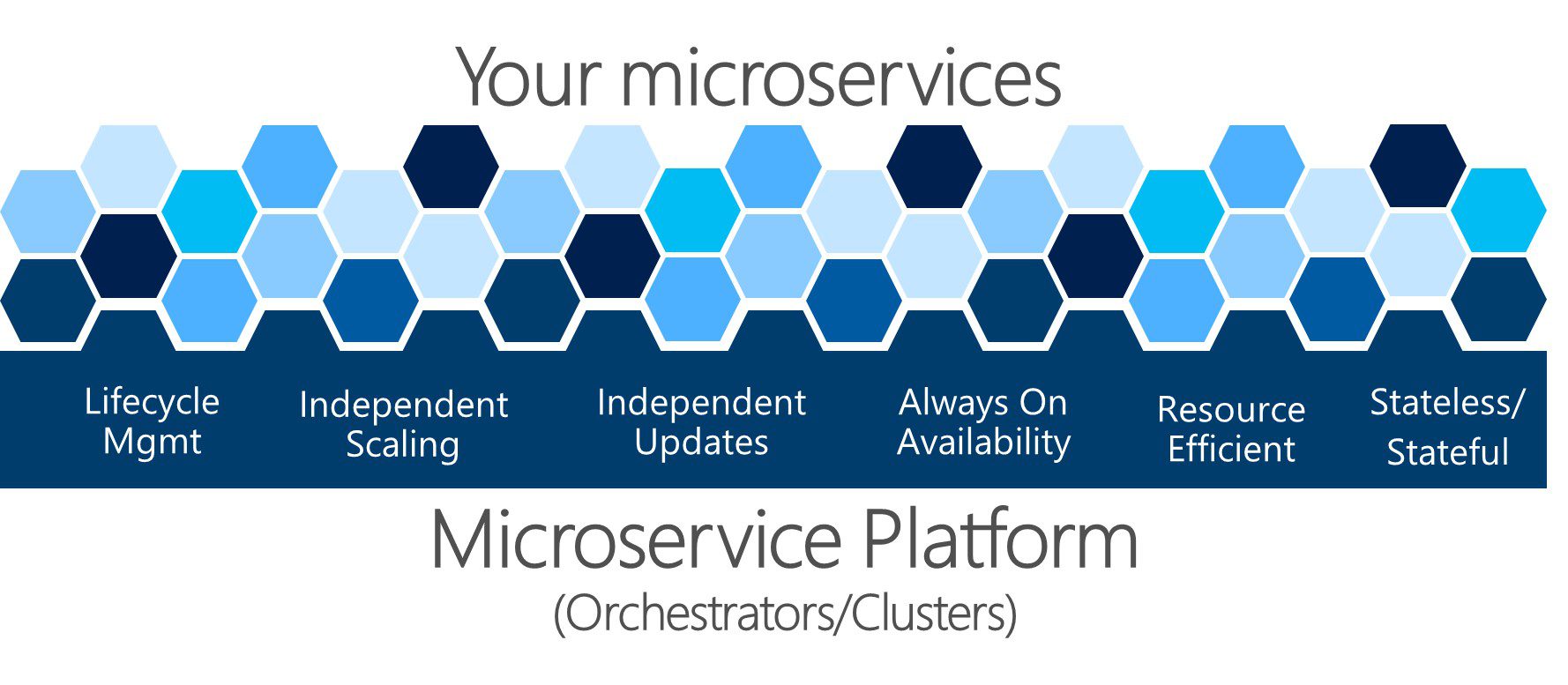Blogs
Home / Blog


According to the Microservices Adoption report published by O’Reilly, 77% of respondents have already adopted microservices and a vast majority (92%) have also experienced success with microservices. In fact, 29% of organizations have said that they are migrating or implementing a majority of their systems using microservices.
Most businesses have already migrated or in the process of migrating their monolithic applications, systems and even architectures to microservices. Thanks to lightweight protocols and granular level services, microservices offer a lot of modularity and make it easier for businesses to develop, test deploy and maintain applications. Developers can break down their code into independent services which can run as independent processes. This way, you can use the output of one service as an input for the next.
If you are still confused about adopting microservices then this article is for you. In this article, you will learn about seven reasons why you should also embrace microservices.
Here are seven reasons why you should adopt microservices.
What really makes microservices stand out is their scalability. Since every service acts as an independent component, you can easily expand a single function or service without expanding the entire application. For more stability and reliability, you can also implement business-critical services on multiple servers. This way, your services are easily accessible, highly available and deliver exceptional performance without negatively impacting other services. This makes microservices a great choice for small or midsized businesses that are in their growth stages.
When you use microservices, your applications are broken down into smaller decentralized services that behave like separate entities. This is the main reason behind the wider adoption of microservices amongst businesses. Unlike traditional monolithic architecture, where failure in code can impact other functions and services as well, microservices work in a different way.

Error in one service does not affect other services and functions. This minimizes the effects of failure from negatively impacting the whole system and allows the maintenance team to fix errors even before the user notices them. You no longer have to experience downtimes and wait for the system to get back up again.
The advantage of microservices is that they are loosely coupled. Due to this, you don’t have to write the entire code base from scratch every time you want to either add a new feature or make changes to an existing feature. All you have to do is just tweak a specific code of a particular function or service and you are good to go. You can even reuse the code, which reduces the development and helps you bring new products faster to the market.
In addition to this, you can also develop applications iteratively in smaller increments. Each component is independently testable and deployable, which allows you to cut your time to market significantly by developing applications quickly.
Unlike cloud vendors and service providers who tend to tie you up in long contracts, microservices give you the freedom to choose your preferred tools for performing any task. Since each service works as a separate entity, they have their own frameworks, languages and supporting services. Despite this, these independent services can still communicate with other services inside your application to ensure seamless data flow and synchronization. This means that you have tons of options when it comes to tools and you can select them according to the task at hand. There are no restrictions or limitations on tools you can use to perform a task. You won’t get that kind of freedom with other technologies.
Read more : HDD Dedicated Servers Vs SSD Dedicated Servers: Which One You Should Choose and Why?
An application has a lot of different components and different teams work on developing each component. For instance, user interface designers work on designing the user interface of the app while back end developers take care of server side logic, back end and technical layers involved. Similarly, database engineers will ensure that the app connects seamlessly with the database, fetch and display records without any hiccups.

On the flipside, microservices relies on cross-functional teams to manage the software development lifecycle from start to finish by adopting a continuous delivery model. This means that code is created, tested and deployed simultaneously on a single service. This is a big departure from traditional approaches where all the code is first developed then tested and lastly deployed. Due to this, you can only show clients the application once it is fully developed and tested. This can create a problem if the application fails to satisfy clients because you have not collected and acted on their feedback.
When multiple teams are working on independent services at once, you can not only develop and deploy applications quickly but can also make quick pivots, which can come in handy in turbulent times. Moreover, code reusability can also minimize the development time.
When you break down your application into smaller functions, you don’t need expensive hardware to run it either. A basic machine with entry-level performance will do. This will lead to a reduction in infrastructure and operational costs. When you combine all these factors with zero downtime offered by microservices, you can get a higher return on your investment.
Read more: 6 Cyber Resilience Targets You Should Set and Achieve This Year
Last but certainly not least is the ease of debugging and maintenance offered by microservices. Since debugging and testing is done in parallel with other phases in a microservices environment, you can ensure continuous delivery and get client feedback after each iteration. This can save you from costly and time-consuming rework as you can improve the application in the light of client feedback.
As your application goes through continuous refinement, you are more likely to deliver error-free applications to your clients. This can enhance user experience and increase customer satisfaction. The better user experiences your app user has, the more likely they are to use your app for a long time.
Which reason convinces you to adopt microservices? Share it with us in the comments section below.
Enter your email to receive the latest news, updates and offers from HostNoc.
